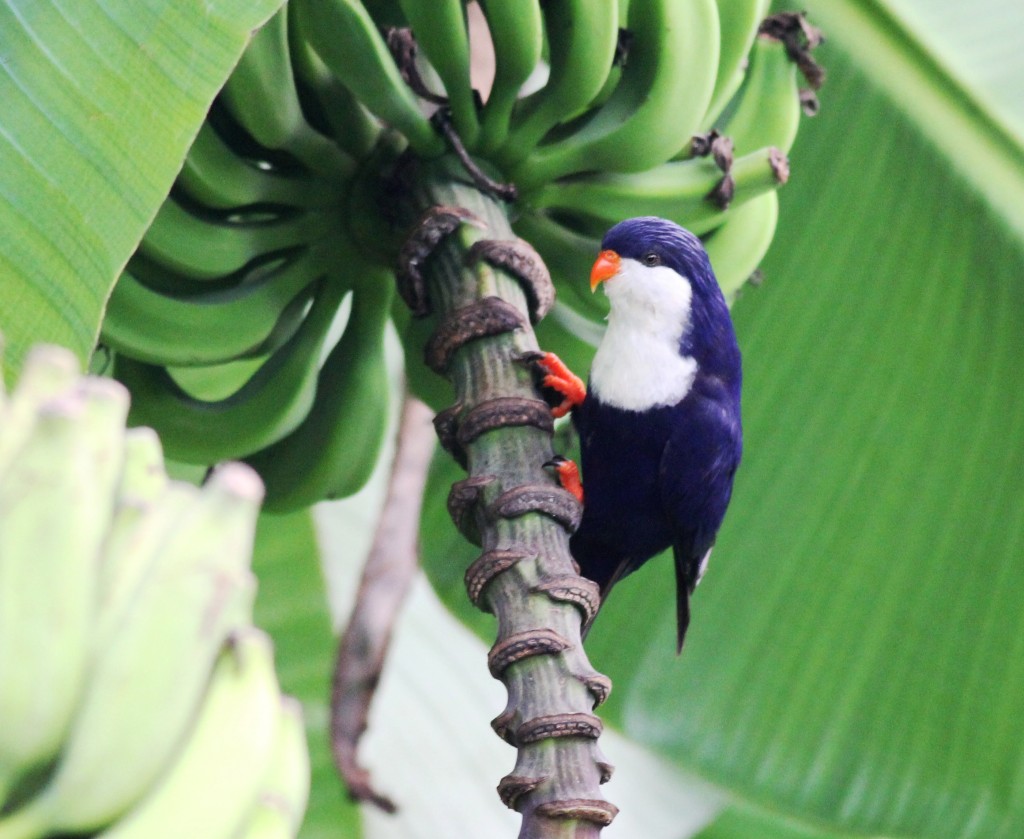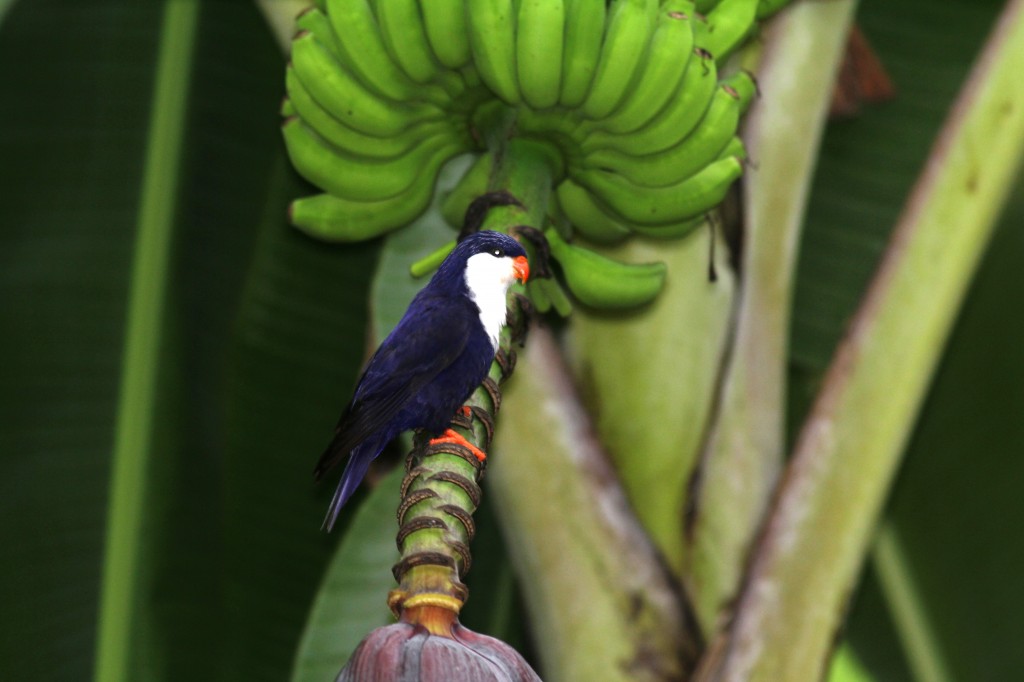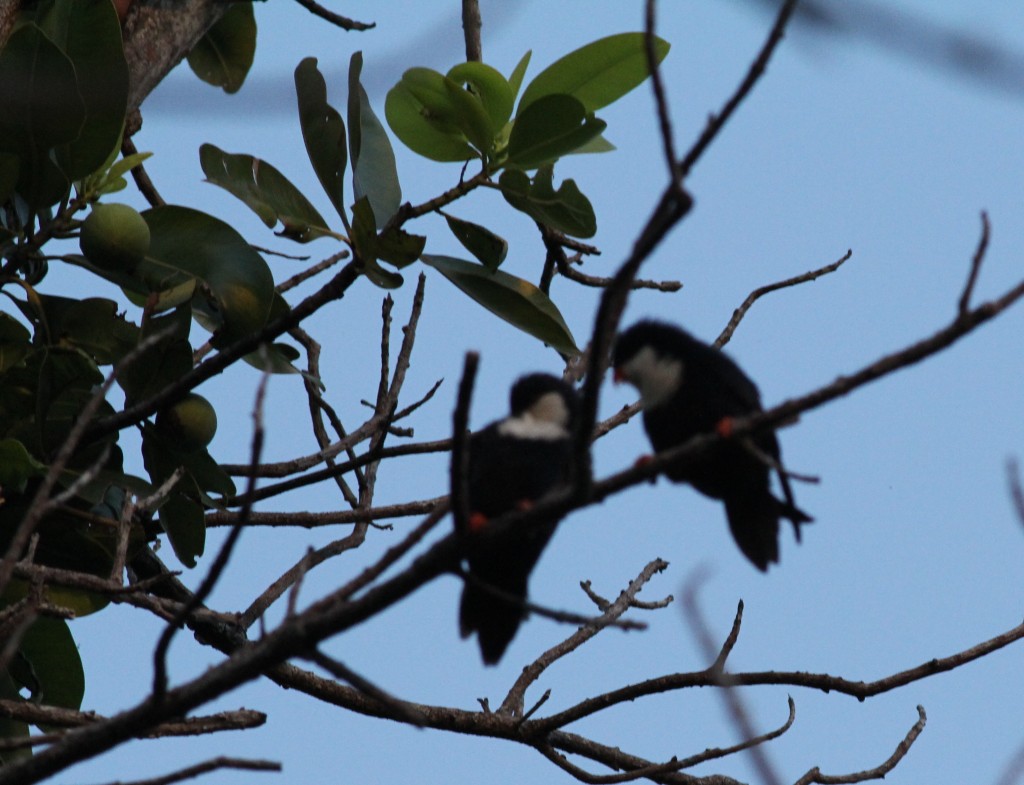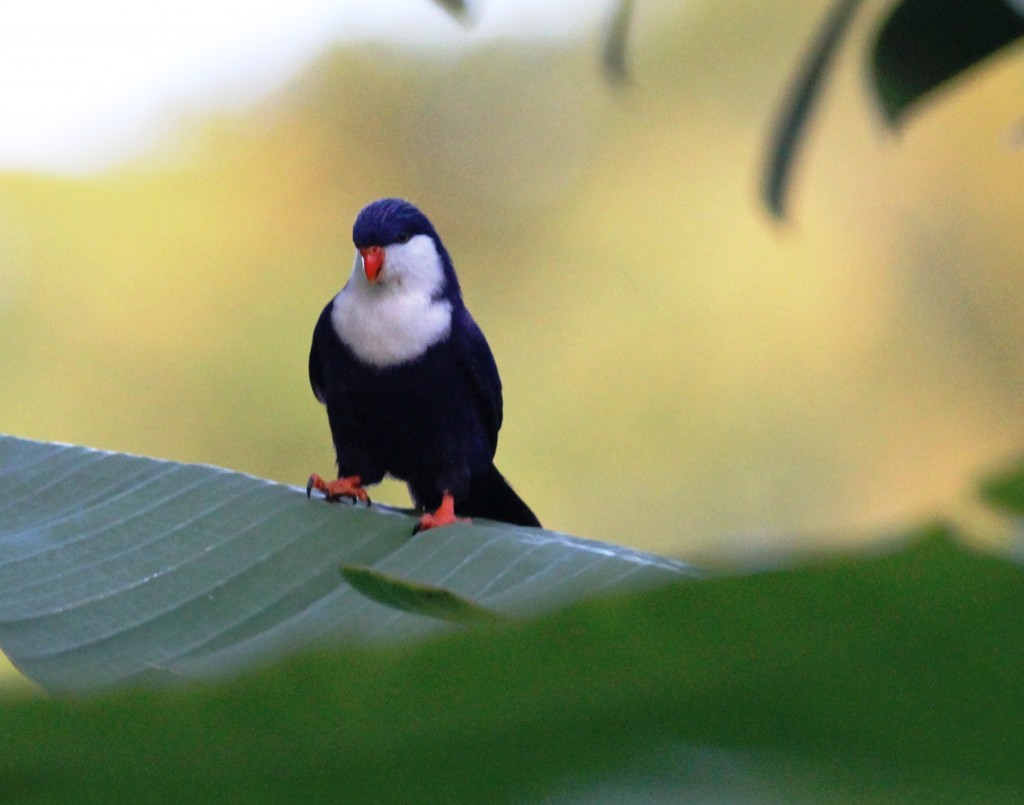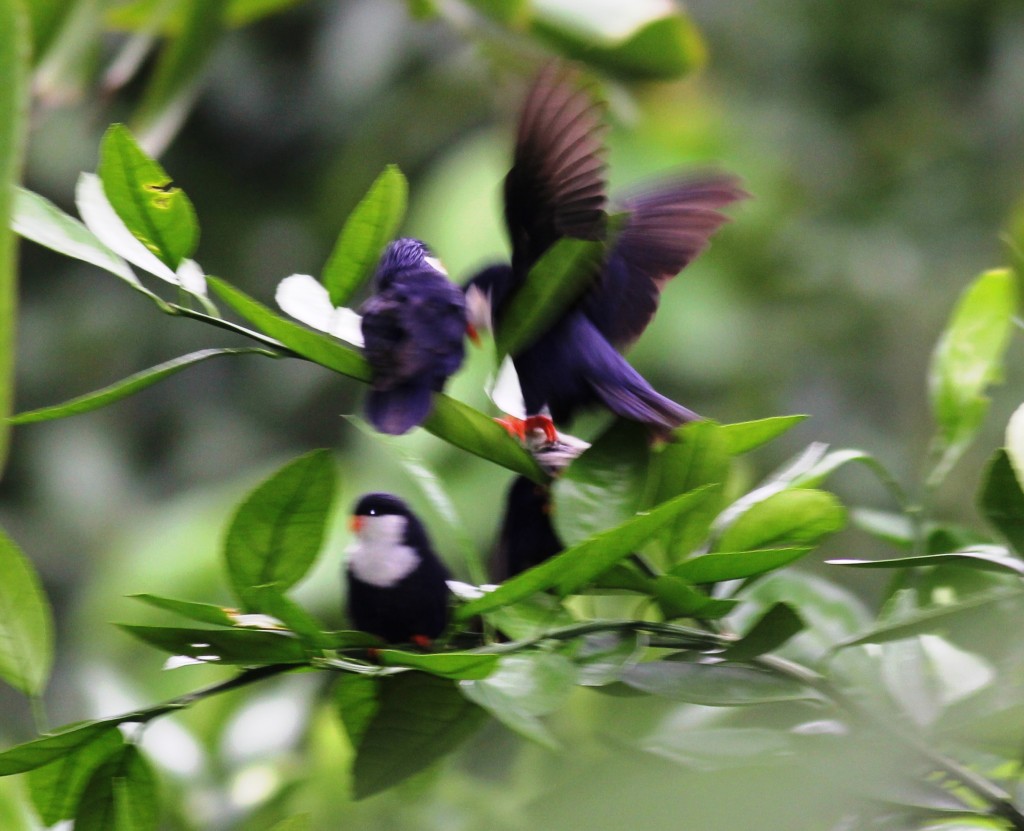The Red-tailed Tropicbird, Phaethon rubricauda is a beautiful but somewhat rare bird that can be seen pretty easily on Aitutaki.
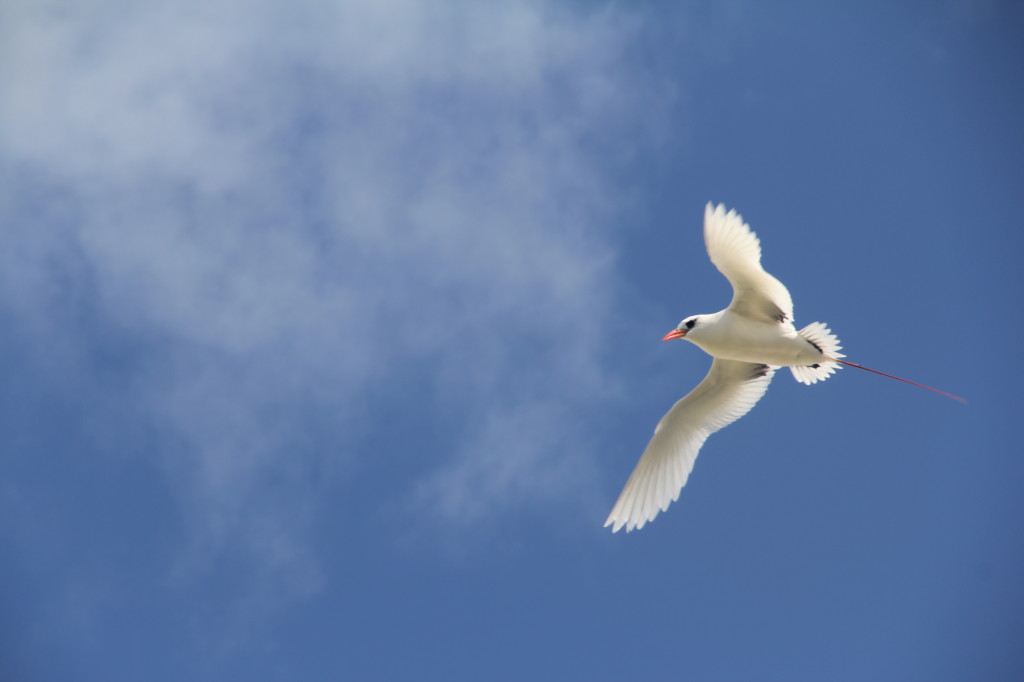
Red-tailed Tropicbird in flight
The Red-tailed Tropicbird nests on oceanic islands in large colonies from the Hawaiian Islands to Easter Island and across to Mauritius and the Reunion Island. In Australia, they nest on Queensland’s coral islands (including Lady Elliott Island) and islands off Western Australia. They disperse widely after breeding, birds ringed in Hawaii have been recovered as far away as Japan and the Philippines. They range from the Red Sea to New Zealand and Chile.
When breeding, they mainly choose coral atolls with low shrubs, nesting underneath them (or occasionally in limestone cavities). They feed offshore away from land, singly rather than in flocks. They are plunge-divers that feed on fish, mostly flying fish, and squid.
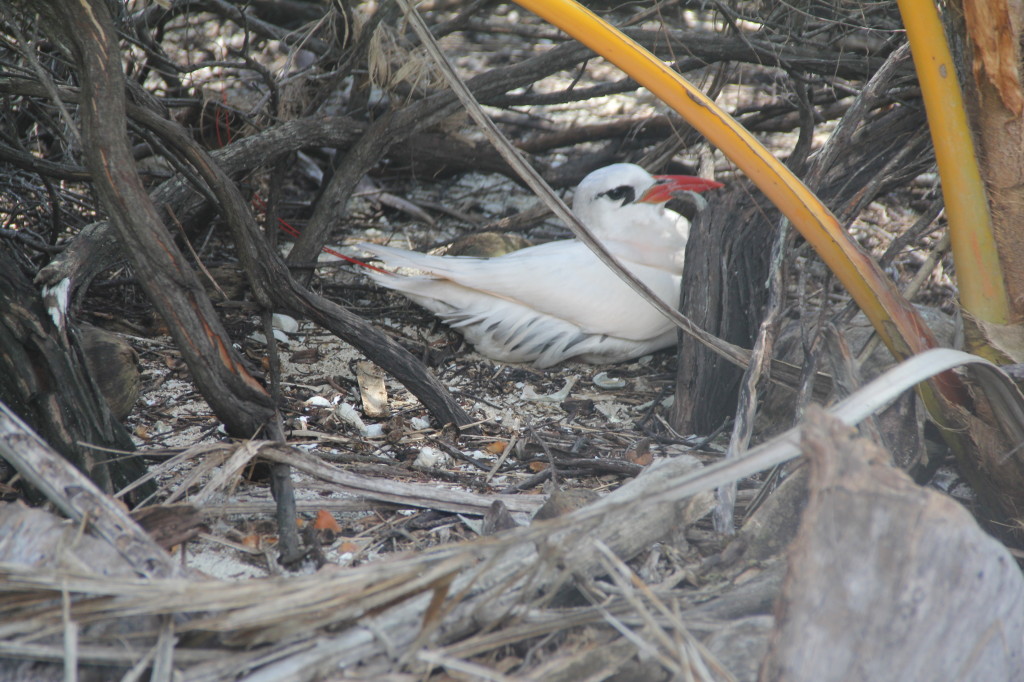
Red-tailed Tropicbird on nest
Chicks hatch out covered in long, whitish to gray down, which moults to a juvenile plumage of white with heavy black barring on the head, back, and uppersides of the wings, before they develop the adult plumage
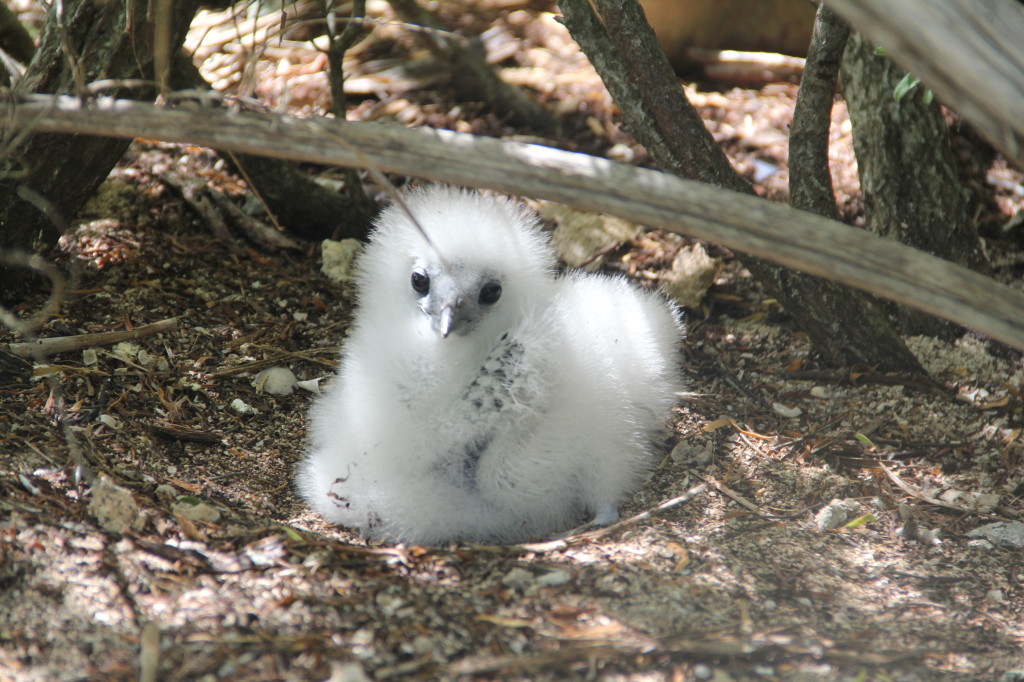
Red-tailed Tropicbird Chick
You can read more about this elegant seabird here.
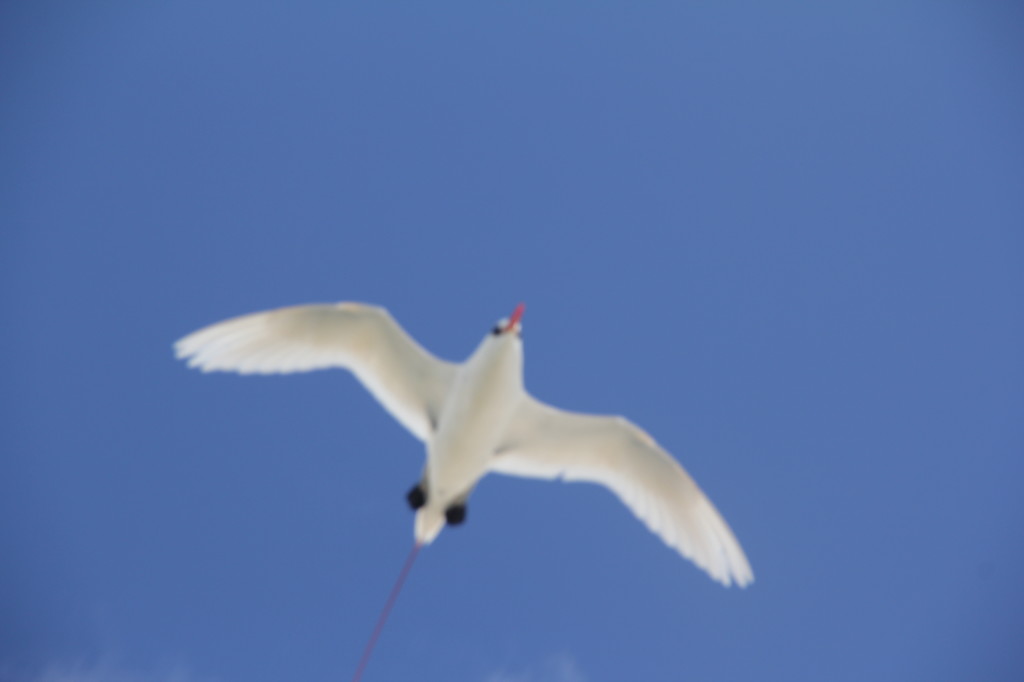
For more information about Aitutaki, please read this post.

